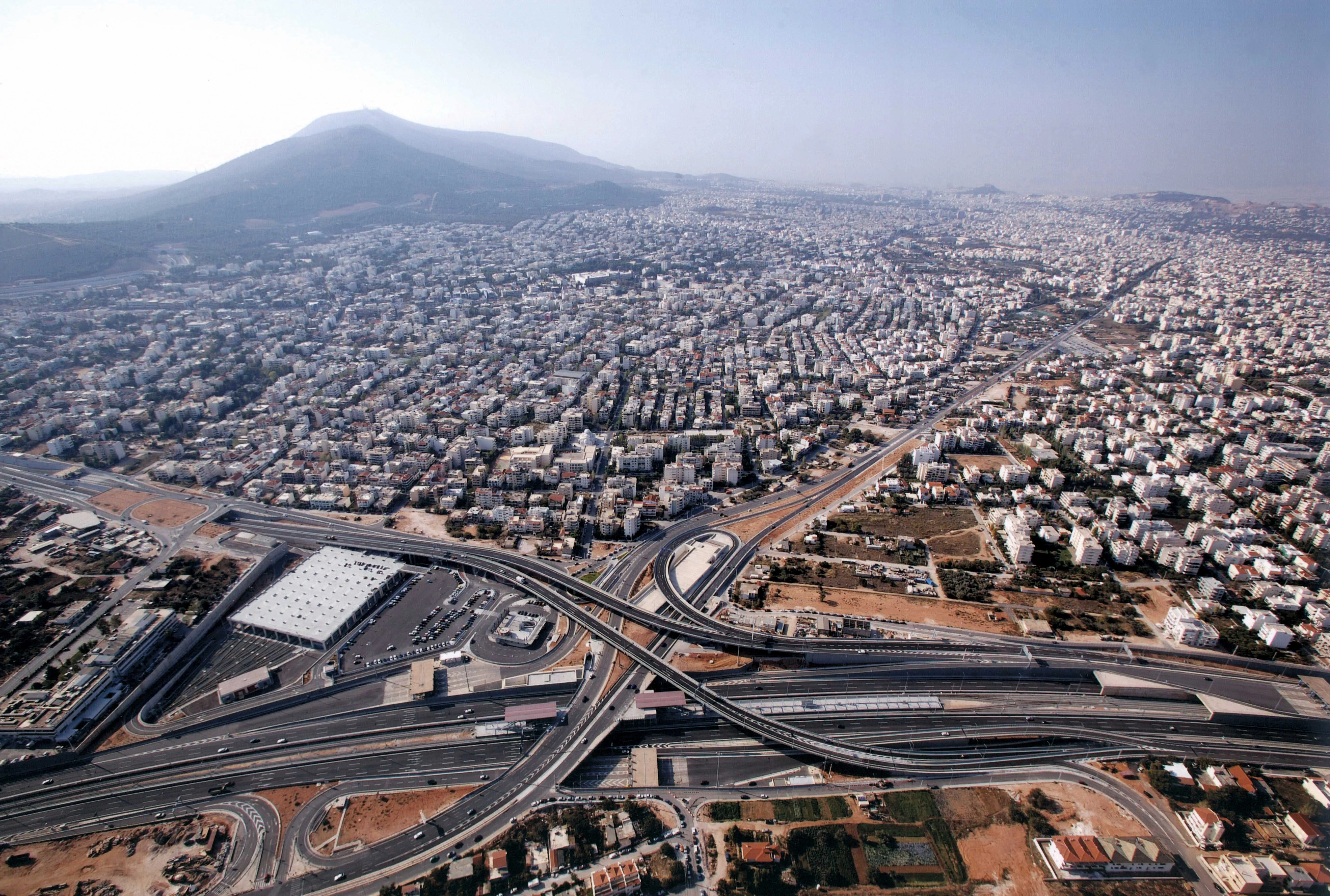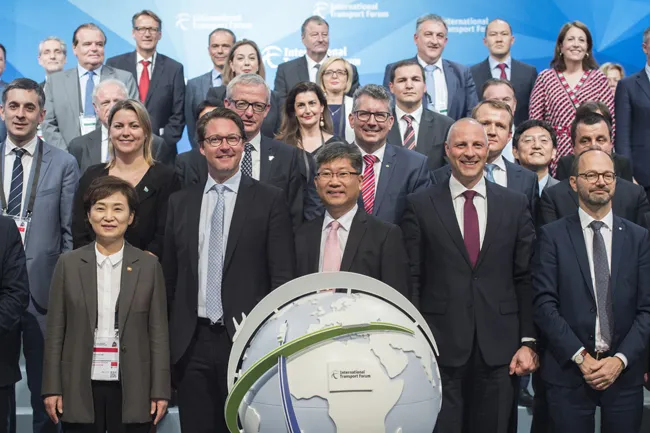The security and safety of the EU’s key infrastructure is a major issue and requires Pan-European agreement
Critical infrastructure, such as highways, energy lines or pipelines, may spread over large areas covering wide geographic zones. There is clearly a need to provide proper security for such infrastructure against illicit actions and against incidents that may escalate to crises. As a result, developing 24/7 surveillance systems for the security of Wide Zones (with multiple assets at localised scale
June 8, 2015
Read time: 6 mins

The security and safety of the EU’s key infrastructure is a major issue and requires Pan-European agreement
Critical infrastructure, such as highways, energy lines or pipelines, may spread over large areas covering wide geographic zones. There is clearly a need to provide proper security for such infrastructure against illicit actions and against incidents that may escalate to crises. As a result, developing 24/7 surveillance systems for the security of Wide Zones (with multiple assets at localised scales) is of major strategic relevance to European economies, industries, authorities and citizens. These illicit/illegal actions against critical infrastructure can be carried out deliberately or by accident, but their implications can still be enormous.
The cost for large deployments and maintenance of ground sensing networks for local surveillance across these Wide Zones is extremely high. As a result, large areas of high economic importance, particularly those situated at Member States cross-borders, can be exposed to undetected illicit activities at a local level. But these could lead to large systemic failures of the processes operating in wider zones, while economic stability, safety and security in Europe can be potentially compromised.
Currently, security systems are linked but this brings many shortcomings. High costs are generally attributed to the systems involved for the surveillance of large areas. These systems can also be complex, with many different types of technology in use. To work effectively, the systems have to be efficient as well as robust and resilient, while also providing sufficient accuracy to detect illicit activity patterns. But these systems face additional challenges as there are difficulties in coordinating surveillance and monitoring activities at national and transnational levels. And at the same time, systems also have to be compliant with EU policies and societal values with respect to privacy protection.
It is clear that there is a need for a system to deal with the issue of wide zones and large area security in a holistic and systemic manner, aimed at providing a solid solution to these issues. Developed to meet this demand, ZONeSEC (FP7-SEC-607292) aims at integrating affordable ground and airborne sensor observation technologies for the critical surveillance of large spatial areas of high economic values in Europe. ZONeSEC defines as Wide Zone the extensions of infrastructure that are critical for the support of the citizens’ daily activities and their normal operation impacts directly the security and safety of civilians.
Secure and interoperable observation data and information management services using open standards will be also deployed within the frames of this project, with the aim of cost-effectively reusing them in the surveillance of many other European Wide Zones. These services will form part of an advanced Knowledge Base (KB) and will primarily focus on large-scale surveillance. The aim is to deliver high-performance detection of abnormal activities at local level and to provide suitable alerts. Semantically-enriched domain knowledge representations will be stored in the KB for supporting high-level data fusion and reasoning with reduced uncertainties and false alerts. Surveillance professionals will subscribe to the scalable KB services of the ZONeSEC system using secure links with customisable visualisation features. As part of the programme, expert reasoning, artificial intelligence and proprietary algorithms will be also developed. A resilient and seamless communication platform will integrate all mechanisms that are already in place, to convey illicit events through multiple mechanisms such as audio, video, e-mail and other methods, over a common multilayer interface.
In ZONeSEC only actual events (with a very low false alarm rate) will be processed into a user-friendly Graphical User Interface (GUI). The GUI will be also used to define and modify zones of interest and sensitivities, as well as manage and review databases. It will also provide multilevel management tools including observing scenes from video cameras in real time and operative interaction with system security features such as intrusion alarms or real time and archived video and data forensics. It will also deliver complete system administration, including adding and removing users and user credentials.
The ZONeSEC platform will be demonstrated, specialising in the detection of illegal unauthorised entrances/trespassing, vandalism or deployment of harmful devices on installations. The pilots will concern Water, Oil and Transnational Gas Pipelines, as well as Highways and Rail tracks, conveyed in six European countries.
In the case of a Highway, there are usually some mechanisms already in place to deal with all sorts of events and illicit actions. For example, a tollway operator’s main responsibility is to provide safe and easy access to the Users of the motorway, by ensuring the motorway’s smooth operation at all times.
With respect to threats that may escalate to crises as a result of illegal activities, several apply to the case of a tolled motorway and these include demonstrations that may also involve site occupation and general disturbances. At a more serious level, these threats can include criminal activities such as deliberate sabotage, vehicle hijacking or perhaps most seriously, terrorist acts.
Generally, as far as events are concerned, sources of detection include traffic intervention patrols that circulate constantly on the motorway, a network of cameras along the motorway, telephone hotlines, inductive loops under the surface of a motorway and security subcontractors, all contributing to alerting the operator about a potential problem very quickly. However, threats can occur from the infrastructure that is adjacent and that is not directly monitored by a motorway. As a result, it is essential to be able to include all systems in a wider, uniform approach, as the one offered in ZONeSEC, being a multilayered digital security and surveillance platform that will operate as a Virtual Perimeter (virtual fence) around any wide-zone facility.
For more information about the project and the participants, please visit %$Linker:2 External <?xml version="1.0" encoding="utf-16"?><dictionary /> 0 0 0 oLinkExternal ZONESEC Visit europa project page false http://cordis.europa.eu/project/rcn/192560_en.html false false %> page
The authors of the article are: Dimitris Mandalozis, strategic and organisational manager, Attikes Diadromes & Dr Dimitris Kanakidis, senior research consultant – Security Research Group Leader, EXUS
IRF China Congress
A keynote congress is being run jointly in China by the International Road Federation (1201 IRF Geneva), the Transport Planning and Research Institute of the Ministry of Transport of China (TPRI), and 2485 China Highway and Transportation Society (CHTS). This major conference will be held in the city of Chongqing, China on 20th-22nd September 2015.
Chongqing was separated from Sichuan province and made into a municipality in its own right in March 1997 in order to accelerate its development. Since its elevation to national-level municipality, the city has dramatically expanded its transportation infrastructure. With the construction of railways and expressways to the east and southeast, Chongqing is a major transportation hub in southwestern China.
The IRF &CHTS China Congress and Annual Meeting will focus on Road Safety, Sustainability and Asset Management and attract participants from all over China and the region. The event will have plenary sessions and thematic sessions running in parallel. If you wish to submit a paper, please contact IRF Geneva Secretariat at [email protected]
An official call for papers will be available in May on IRF Geneva website.
Critical infrastructure, such as highways, energy lines or pipelines, may spread over large areas covering wide geographic zones. There is clearly a need to provide proper security for such infrastructure against illicit actions and against incidents that may escalate to crises. As a result, developing 24/7 surveillance systems for the security of Wide Zones (with multiple assets at localised scales) is of major strategic relevance to European economies, industries, authorities and citizens. These illicit/illegal actions against critical infrastructure can be carried out deliberately or by accident, but their implications can still be enormous.
The cost for large deployments and maintenance of ground sensing networks for local surveillance across these Wide Zones is extremely high. As a result, large areas of high economic importance, particularly those situated at Member States cross-borders, can be exposed to undetected illicit activities at a local level. But these could lead to large systemic failures of the processes operating in wider zones, while economic stability, safety and security in Europe can be potentially compromised.
Currently, security systems are linked but this brings many shortcomings. High costs are generally attributed to the systems involved for the surveillance of large areas. These systems can also be complex, with many different types of technology in use. To work effectively, the systems have to be efficient as well as robust and resilient, while also providing sufficient accuracy to detect illicit activity patterns. But these systems face additional challenges as there are difficulties in coordinating surveillance and monitoring activities at national and transnational levels. And at the same time, systems also have to be compliant with EU policies and societal values with respect to privacy protection.
It is clear that there is a need for a system to deal with the issue of wide zones and large area security in a holistic and systemic manner, aimed at providing a solid solution to these issues. Developed to meet this demand, ZONeSEC (FP7-SEC-607292) aims at integrating affordable ground and airborne sensor observation technologies for the critical surveillance of large spatial areas of high economic values in Europe. ZONeSEC defines as Wide Zone the extensions of infrastructure that are critical for the support of the citizens’ daily activities and their normal operation impacts directly the security and safety of civilians.
Secure and interoperable observation data and information management services using open standards will be also deployed within the frames of this project, with the aim of cost-effectively reusing them in the surveillance of many other European Wide Zones. These services will form part of an advanced Knowledge Base (KB) and will primarily focus on large-scale surveillance. The aim is to deliver high-performance detection of abnormal activities at local level and to provide suitable alerts. Semantically-enriched domain knowledge representations will be stored in the KB for supporting high-level data fusion and reasoning with reduced uncertainties and false alerts. Surveillance professionals will subscribe to the scalable KB services of the ZONeSEC system using secure links with customisable visualisation features. As part of the programme, expert reasoning, artificial intelligence and proprietary algorithms will be also developed. A resilient and seamless communication platform will integrate all mechanisms that are already in place, to convey illicit events through multiple mechanisms such as audio, video, e-mail and other methods, over a common multilayer interface.
In ZONeSEC only actual events (with a very low false alarm rate) will be processed into a user-friendly Graphical User Interface (GUI). The GUI will be also used to define and modify zones of interest and sensitivities, as well as manage and review databases. It will also provide multilevel management tools including observing scenes from video cameras in real time and operative interaction with system security features such as intrusion alarms or real time and archived video and data forensics. It will also deliver complete system administration, including adding and removing users and user credentials.
The ZONeSEC platform will be demonstrated, specialising in the detection of illegal unauthorised entrances/trespassing, vandalism or deployment of harmful devices on installations. The pilots will concern Water, Oil and Transnational Gas Pipelines, as well as Highways and Rail tracks, conveyed in six European countries.
In the case of a Highway, there are usually some mechanisms already in place to deal with all sorts of events and illicit actions. For example, a tollway operator’s main responsibility is to provide safe and easy access to the Users of the motorway, by ensuring the motorway’s smooth operation at all times.
With respect to threats that may escalate to crises as a result of illegal activities, several apply to the case of a tolled motorway and these include demonstrations that may also involve site occupation and general disturbances. At a more serious level, these threats can include criminal activities such as deliberate sabotage, vehicle hijacking or perhaps most seriously, terrorist acts.
Generally, as far as events are concerned, sources of detection include traffic intervention patrols that circulate constantly on the motorway, a network of cameras along the motorway, telephone hotlines, inductive loops under the surface of a motorway and security subcontractors, all contributing to alerting the operator about a potential problem very quickly. However, threats can occur from the infrastructure that is adjacent and that is not directly monitored by a motorway. As a result, it is essential to be able to include all systems in a wider, uniform approach, as the one offered in ZONeSEC, being a multilayered digital security and surveillance platform that will operate as a Virtual Perimeter (virtual fence) around any wide-zone facility.
For more information about the project and the participants, please visit %$Linker:
The authors of the article are: Dimitris Mandalozis, strategic and organisational manager, Attikes Diadromes & Dr Dimitris Kanakidis, senior research consultant – Security Research Group Leader, EXUS
IRF China Congress
A keynote congress is being run jointly in China by the International Road Federation (
Chongqing was separated from Sichuan province and made into a municipality in its own right in March 1997 in order to accelerate its development. Since its elevation to national-level municipality, the city has dramatically expanded its transportation infrastructure. With the construction of railways and expressways to the east and southeast, Chongqing is a major transportation hub in southwestern China.
The IRF &CHTS China Congress and Annual Meeting will focus on Road Safety, Sustainability and Asset Management and attract participants from all over China and the region. The event will have plenary sessions and thematic sessions running in parallel. If you wish to submit a paper, please contact IRF Geneva Secretariat at [email protected]
An official call for papers will be available in May on IRF Geneva website.








